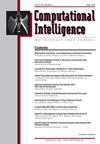A novel feature ranking algorithm for text classification: Brilliant probabilistic feature selector (BPFS)
IF 1.8
4区 计算机科学
Q3 COMPUTER SCIENCE, ARTIFICIAL INTELLIGENCE
引用次数: 0
Abstract
Text classification (TC) is a very crucial task in this century of high‐volume text datasets. Feature selection (FS) is one of the most important stages in TC studies. In the literature, numerous feature selection methods are recommended for TC. In the TC domain, filter‐based FS methods are commonly utilized to select a more informative feature subsets. Each method uses a scoring system that is based on its algorithm to order the features. The classification process is then carried out by choosing the top‐N features. However, each method's feature order is distinct from the others. Each method selects by giving the qualities that are critical to its algorithm a high score, but it does not select by giving the features that are unimportant a low value. In this paper, we proposed a novel filter‐based FS method namely, brilliant probabilistic feature selector (BPFS), to assign a fair score and select informative features. While the BPFS method selects unique features, it also aims to select sparse features by assigning higher scores than common features. Extensive experimental studies using three effective classifiers decision tree (DT), support vector machines (SVM), and multinomial naive bayes (MNB) on four widely used datasets named Reuters‐21,578, 20Newsgroup, Enron1, and Polarity with different characteristics demonstrate the success of the BPFS method. For feature dimensions, 20, 50, 100, 200, 500, and 1000 dimensions were used. The experimental results on different benchmark datasets show that the BPFS method is more successful than the well‐known and recent FS methods according to Micro‐F1 and Macro‐F1 scores.一种新的文本分类特征排序算法:Brilliant概率特征选择器(BPFS)
文本分类(TC)是本世纪大容量文本数据集的一项非常重要的任务。特征选择(FS)是TC研究中最重要的阶段之一。在文献中,推荐了许多用于TC的特征选择方法。在TC域中,通常使用基于滤波器的FS方法来选择信息量更大的特征子集。每种方法都使用基于其算法的评分系统来对特征进行排序。然后通过选择前N个特征来执行分类过程。然而,每种方法的特征顺序与其他方法不同。每种方法都通过给对其算法至关重要的质量打高分来进行选择,但它不会通过给不重要的特征打低值来进行选择。在本文中,我们提出了一种新的基于滤波器的FS方法,即出色的概率特征选择器(BPFS),以分配公平的分数并选择信息特征。BPFS方法在选择独特特征的同时,也旨在通过分配比常见特征更高的分数来选择稀疏特征。在Reuters-21578、20Newsgroup、Enron1和Polarity这四个广泛使用的具有不同特征的数据集上,使用三个有效分类器决策树(DT)、支持向量机(SVM)和多项式朴素贝叶斯(MNB)进行了广泛的实验研究,证明了BPFS方法的成功。对于特征尺寸,使用了20、50、100、200、500和1000个尺寸。在不同基准数据集上的实验结果表明,根据Micro-F1和Macro-F1评分,BPFS方法比众所周知的和最近的FS方法更成功。
本文章由计算机程序翻译,如有差异,请以英文原文为准。
求助全文
约1分钟内获得全文
求助全文
来源期刊

Computational Intelligence
工程技术-计算机:人工智能
CiteScore
6.90
自引率
3.60%
发文量
65
审稿时长
>12 weeks
期刊介绍:
This leading international journal promotes and stimulates research in the field of artificial intelligence (AI). Covering a wide range of issues - from the tools and languages of AI to its philosophical implications - Computational Intelligence provides a vigorous forum for the publication of both experimental and theoretical research, as well as surveys and impact studies. The journal is designed to meet the needs of a wide range of AI workers in academic and industrial research.
 求助内容:
求助内容: 应助结果提醒方式:
应助结果提醒方式:


